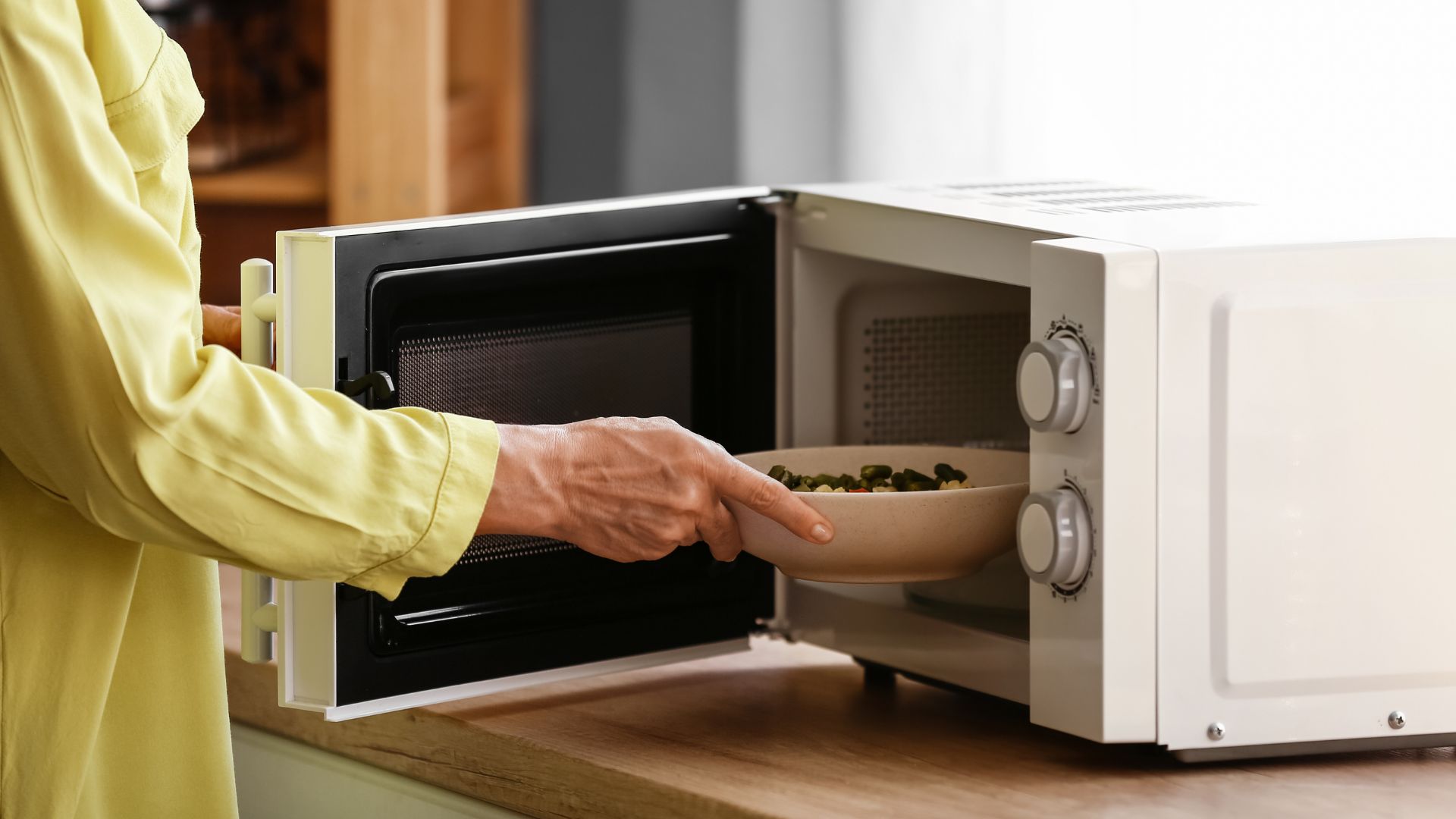The Europe microwave oven market is poised for substantial growth, expanding from USD 3.11 billion in 2024 to USD 4.28 billion by 2033, growing at a CAGR of 3.62% during the forecast period of 2025–2033, according to Renub Research. This growth is fueled by rising consumer demand for convenience appliances, increasing disposable incomes, and significant advancements in smart cooking technologies. Microwave ovens are now a staple in modern kitchens across Europe, driven by changing lifestyles, urbanization, and the growing trend of quick, healthy, and efficient meal preparation.
For a detailed analysis, explore the full report here: Europe Microwave Oven Market.
Growing Demand for Convenience Appliances
In today’s fast-paced lifestyle, microwave ovens have become indispensable kitchen appliances, allowing consumers to prepare meals in a fraction of the time compared to conventional cooking methods. The growing preference for ready-to-eat and frozen foods in urban households is boosting the adoption of microwaves.
Modern microwave ovens offer features like defrosting, grilling, baking, and combination cooking modes, which appeal to busy families, working professionals, and students. The ability to cook healthier meals with minimal oil is another major factor driving consumer interest in advanced microwave ovens.
Smart Cooking Technologies: The Future of Microwave Ovens
The microwave oven industry is witnessing rapid innovation. Manufacturers are introducing smart and connected microwave ovens that can be controlled via smartphones, voice assistants like Alexa or Google Home, and IoT-enabled platforms.
Advanced features such as auto-cooking presets, humidity sensors, inverter technology, and precise temperature control are making these appliances more efficient and user-friendly. The integration of AI-powered cooking assistants that recommend recipes and automatically adjust settings is further driving consumer interest.
By 2033, smart kitchen appliances, particularly AI-driven microwave ovens, are expected to dominate the market, catering to tech-savvy households across Europe.
Rising Disposable Income and Urbanization
The surge in disposable incomes across European countries is a major driver of microwave oven sales. Consumers are increasingly investing in premium kitchen appliances that combine style, technology, and functionality.
Urbanization has also played a critical role in boosting demand, with small apartment living and compact kitchens creating a need for versatile, space-saving appliances. Microwave ovens, particularly countertop and built-in variants, offer convenience without compromising on space.
Market Segmentation Analysis
The Europe microwave oven market can be segmented based on product type, application, structure, and distribution channel.
By Product Type
- Solo Microwave Ovens: Affordable and widely used for basic reheating and cooking.
- Grill Microwave Ovens: Popular among households that require grilling and toasting functions.
- Convection Microwave Ovens: The fastest-growing category due to its versatility in baking, roasting, and advanced cooking.
By Application
- Residential Use: Dominates the market due to growing demand for convenience appliances in homes.
- Commercial Use: Rising demand from hotels, restaurants, and quick-service restaurants (QSRs).
By Structure
- Countertop Microwave Ovens: Affordable, portable, and ideal for small households.
- Built-in Microwave Ovens: Premium segment, favored for modular kitchens and modern interiors.
By Distribution Channel
- Supermarkets & Hypermarkets: The largest channel, offering a wide range of products.
- Specialty Stores & Electronics Outlets: Popular for high-end appliances and after-sales services.
- E-commerce: Growing rapidly due to discounts, wide product variety, and doorstep delivery.
Regional Insights
Western Europe
Western European nations such as Germany, France, and the UK dominate the market due to high purchasing power, modern kitchen infrastructure, and a strong preference for energy-efficient appliances.
Southern Europe
Countries like Italy and Spain are witnessing growing demand, driven by increased tourism and the flourishing restaurant industry, which requires advanced cooking appliances.
Northern Europe
Scandinavian countries are adopting premium and eco-friendly microwave ovens with advanced features, owing to their focus on sustainability and innovation.
Eastern Europe
Emerging economies in Eastern Europe, including Poland, Hungary, and the Czech Republic, are experiencing rising sales due to urbanization, increasing middle-class incomes, and expanding retail networks.
Key Market Drivers
- Rising Popularity of Ready-to-Eat Meals: Increasing demand for frozen and packaged foods is boosting microwave oven sales.
- Technological Advancements: Smart, AI-integrated, and IoT-enabled microwave ovens are gaining traction.
- Growth of E-commerce: Online platforms are making it easier for consumers to compare features and purchase appliances.
- Energy Efficiency Regulations: Demand for energy-saving appliances is rising due to stringent EU regulations on energy consumption.
- Changing Lifestyles: Busy work schedules and smaller family sizes drive the need for convenient cooking solutions.
Challenges in the Market
- High Competition: The market is saturated with both global and regional players, leading to price wars.
- Consumer Awareness: Some consumers are unaware of advanced features like inverter technology, limiting adoption.
- Economic Fluctuations: Inflation and currency fluctuations can affect consumer spending on non-essential appliances.
- Environmental Concerns: Rising concerns over electronic waste challenge manufacturers to offer sustainable recycling solutions.
Competitive Landscape
The Europe microwave oven market is highly competitive, with companies focusing on innovation, energy efficiency, and premium designs. Key players include:
- Samsung Electronics Co., Ltd.
- LG Electronics Inc.
- Whirlpool Corporation
- Panasonic Corporation
- Electrolux AB
- Sharp Corporation
- Bosch Home Appliances
- Miele & Cie. KG
These companies are introducing sleek, multifunctional, and eco-friendly microwave ovens to gain a competitive edge in the European market.
Future Trends in the Europe Microwave Oven Market
- Voice-Controlled Appliances: Integration with smart assistants like Alexa and Google Home.
- Eco-Friendly Designs: Energy-efficient microwaves with recyclable components.
- Compact, Modular Appliances: Catering to urban apartments and smaller kitchens.
- Multi-Cooking Capabilities: Devices that combine microwave, convection, and air fryer features.
- Subscription-Based Cooking Platforms: Manufacturers may partner with recipe platforms to offer guided cooking experiences.
Outlook Towards 2033
The microwave oven market in Europe will continue to grow steadily, supported by increasing consumer demand for smart and energy-efficient appliances. By 2033, premium convection and built-in microwave ovens will dominate due to their multifunctionality, aesthetic appeal, and suitability for modern kitchens.
10 Frequently Asked Questions (FAQs)
1. What is the size of the Europe microwave oven market?
The market is expected to grow from USD 3.11 billion in 2024 to USD 4.28 billion by 2033, at a CAGR of 3.62%.
2. What are the major drivers of this market?
Key drivers include rising disposable income, technological advancements, and growing demand for convenience appliances.
3. Which product type dominates the market?
Convection microwave ovens are the fastest-growing segment due to their versatility.
4. Are smart microwave ovens popular in Europe?
Yes, IoT-enabled and voice-controlled microwave ovens are gaining significant traction.
5. Which regions in Europe lead the market?
Western Europe, particularly Germany, the UK, and France, leads the market.
6. What role does e-commerce play in this market?
E-commerce is driving growth by offering wide product selections and competitive pricing.
7. Who are the leading companies in the market?
Samsung, LG, Whirlpool, Electrolux, and Panasonic are among the top players.
8. What challenges does the market face?
Challenges include high competition, environmental concerns, and economic fluctuations.
9. What trends are shaping the market?
Trends include AI-powered cooking, energy-efficient models, and voice-assisted controls.
10. What is the future outlook for 2033?
The market will continue growing steadily, with smart and built-in microwave ovens dominating by 2033.
New Publish Report:
- Europe Tea Market Analysis and Growth Forecast 2025–2033
- Europe Fish Oil Market Growth and Forecast 2025–2033
- Europe Online Travel Market to Reach US$ 560 Billion by 2033 – 11.22% CAGR Forecast (2025–2033)
About Us
Renub Research is a Market Research and Consulting Company with more than 15 years of experience, especially in international Business-to-Business Research, Surveys, and Consulting. We provide a wide range of business research solutions that help companies make better business decisions. We partner with clients across all sectors and regions to identify their highest-value opportunities, address their most critical challenges, and transform their businesses.
Our wide clientele includes key players in Healthcare, Travel & Tourism, Food & Beverages, Power & Energy, Information Technology, Telecom & Internet, Chemicals, Logistics & Automotive, Consumer Goods & Retail, Building & Construction, and Agriculture. Our core team comprises experienced professionals with graduate, postgraduate, and Ph.D. qualifications in Finance, Marketing, Human Resources, Bio-Technology, Medicine, Information Technology, Environmental Science, and more.
Media Contact:
Company Name: Renub Research
Contact Person: Rajat Gupta, Marketing Manager
Phone No: +91-120-421-9822 (IND) | +1-478-202-3244 (USA)
Email: rajat@renub.com






